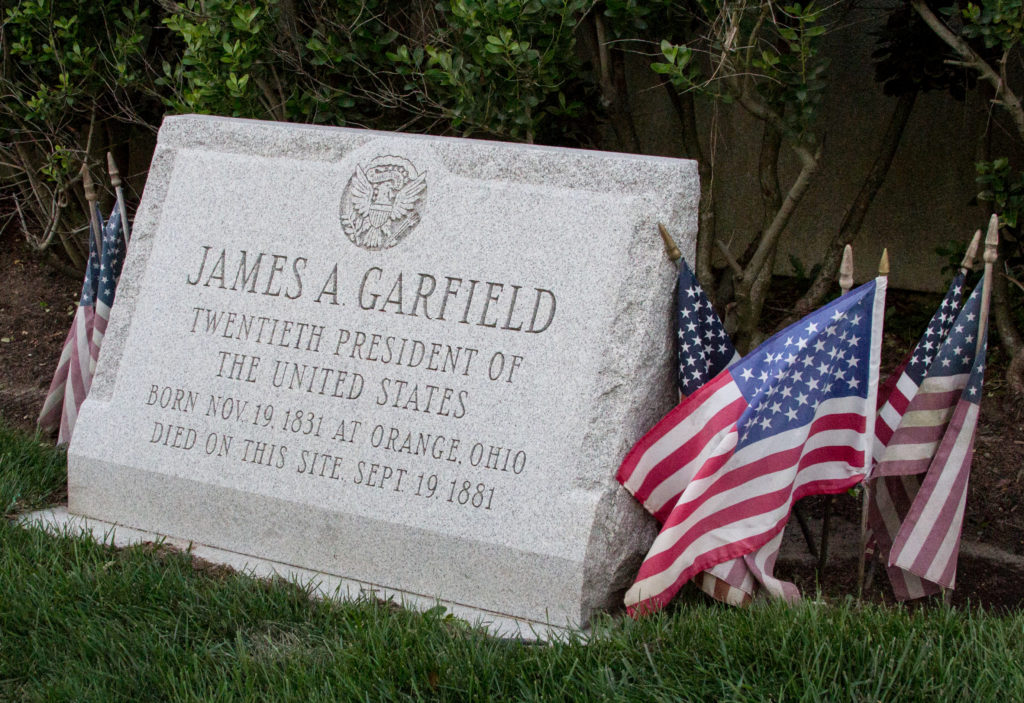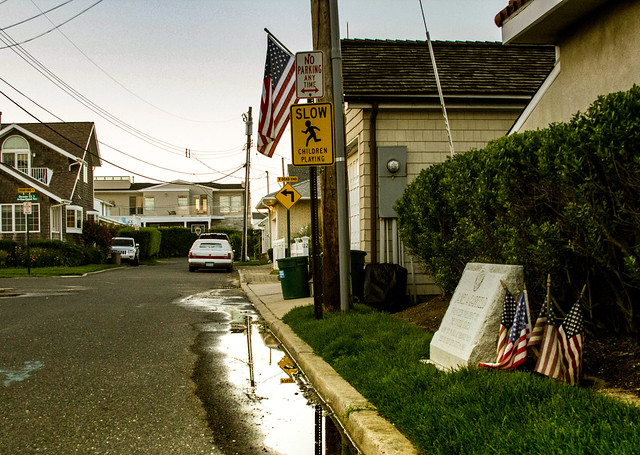
I have a minor obsession with the assassinated President James A. Garfield. What drew my attention to him was one doleful fact about his passing: He lingered for 80 days after he was shot in July 1881. He succumbed to infections caused by the insistent and non-sterile probing of his most serious wound by a succession of doctors searching for a bullet. Alexander Graham Bell attempted to use a primitive medical detector to find the slug. He failed, perhaps because Garfield was lying on a newfangled metal-coil mattress. A medical historian summed up the case a few years ago: “Garfield had such a nonlethal wound. In today’s world, he would have gone home in a matter or two or three days.”
Instead, Garfield languished. Two months after he was shot, he was taken to Long Branch, New Jersey, a seaside resort filled with the rich and famous of the Gilded Age. Sort of a 19th century version of Malibu or the Hamptons. Those caring for the president are said to have thought maybe the sea air would help effect a cure. Or maybe they knew better and just wanted the president to be comfortable before the inevitable occurred.
Garfield was taken on a special train to Long Branch. His condition was so fragile that there was widespread discussion of how fast the train ought to travel on the trip from Washington to protect him from unnecessary jolts (the decision: slow. The 238-mile trip took about seven hours). Doctors thought it best that Garfield not be transferred to a horse-drawn coach from the train, so teamsters and citizen volunteers built a 3,200-foot temporary rail line from a nearby station to the 20-room Francklyn Cottage in the hamlet of Elberon, where the president was to convalesce. The line, built in less than a day, was tested by running a locomotive over the fresh tracks. Twice, the engine derailed because a curve in the line was too short, and that section of the rails had to be relaid. The third time, the tracks stayed in place, and they held up for a final test before the president’s train got there.
Garfield arrived on September 6, 1881, and he was duly installed in his seaside abode. He died on September 19.
We’ve been visiting Kate’s family, which lives in the general vicinity of Long Branch, for the last couple of days. Late this afternoon, we decided to drive over and see if we could find any trace of the Garfield story. One remnant you come across if you do some quick web research is a “tea house” that’s said to be built from some of the ties from the temporary railroad. It’s supposed to be the only building with any connection to the Garfield story that’s still standing. I saw online that the tea house resides outside the Long Branch History Museum, so we went looking for that. We more or less stumbled upon it around sunset and saw that the museum consists of the former St. James Chapel, a.k.a. Church of the Presidents, and several tiny frame structures (including the Garfield tea house) on a lot surrounded by a flimsy chain-link fence.
We also noticed that a little semi-private-looking lane nearby was named Garfield Road. We decided to take a walk up that street to see if there was anything related to the president there. What I was imagining was a plaque saying “this is the place where. …”
Around a corner of the lane, we encountered something just a little grander, a granite marker (pictured above) on a little patch of lawn outside someone’s shore house. It’s a wonderful scene in a way: to one side, someone’s got the garbage out for pickup. On the other, there’s a “children playing” sign. And in the middle, the simplest acknowledgment that one noted life came to an end here:
JAMES A. GARFIELD
Twentieth president of the United States
Born Nov. 19, 1831 at Orange, Ohio
Died on this site, Sept. 19, 1881
Here’s a brief explanation for how the marker came to be, by way of a nice little 1981 historical essay in The New York Times:
“In 1961, as a result of a campaign begun in 1957 by 8-year-old Bruce Frankel of Asbury Park, a granite marker was erected on the site of the cottage. Mr. Frankel, a lawyer, now lives in Fort Myers, Fla. and is still an avid reader of Presidential history.”

